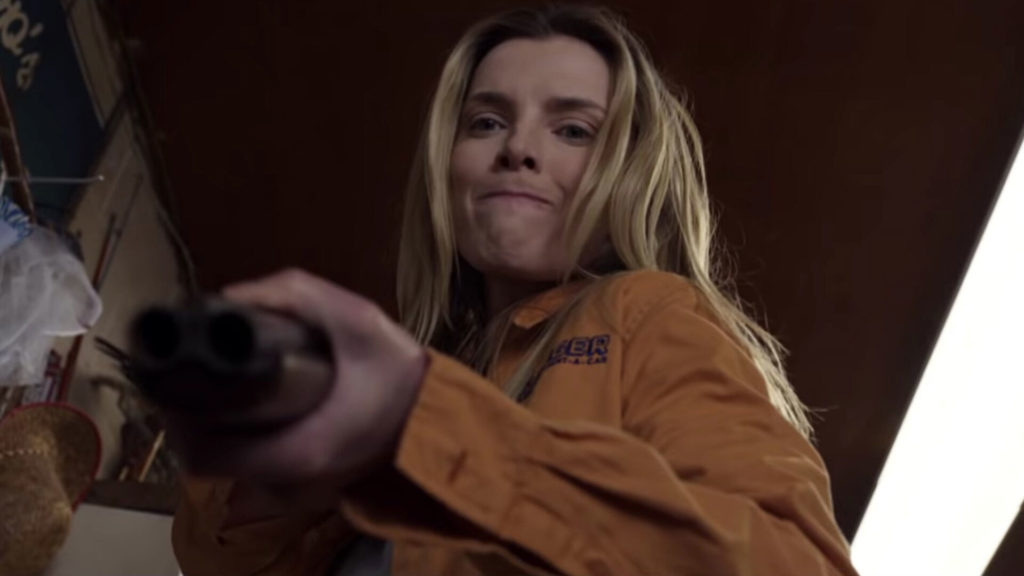
This feature was first written when The Hunt was one of the few new films in cinemas. Cinemas that are now closed. What a difference a week makes… But, by the time you read this you’ll most likely be able to watch The Hunt from the comfort of your quarantine zone, as Universal rush release it to digital rental.
In our current world of postponed movies, it is ironic you’ll be freely able to watch The Hunt, because this Blumhouse shocker led the way. Pulled from its original release date of autumn 2019 following mass-shootings in the US, it briefly hit cinemas in the UK on 11th March and 13th in the States.
Back in 2019, right-wing media quickly piled in on a film they saw as a gleefully sadistic tale of liberal elitists hunting Trump supporters. The Commander-in-Chimp himself, Donald J. Trump, didn’t attack The Hunt by name, but tweeted, “The movie coming out is made in order to inflame and cause chaos” branding Hollywood, “racist at the highest level.” Presumably he was irked because high level racism and inflammatory chaos are his things… and we know he doesn’t like to share.
At times reactions grew muddled about the film, whose plot concerns strangers, led by Betty Gilpin of Netflix’s GLOW, being hunted by mysterious, well-armed assassins, including Oscar-winner Hilary Swank. Right-wing magazine The National Review and the left-leaning The Atlantic both stated The Hunt’s ideology was right-wing and anti-liberal.
However, The Hunt is now on and, predictably, yeah, it’s all right (but not alt-right). Abiding by Blumhouse rules, it features big Hollywood names (here Swank and Emma Roberts) getting stuck into a down-and-dirty genre flick, presumably receiving a healthy percentage of the box office gross for their efforts.
Like many other Blumhouse joints, the film sticks to remote rural locations and interior sets, sidestepping the need for expensive city permits and swathes of extras. The lean shooting style means the whole thing comes in at 90 minutes, great for squeezing in that final showing of the day at the multiplex.
Yet, what is most interesting about The Hunt is also what is most familiar: this is yet another telling of 1932’s The Most Dangerous Game, surely the most oft-told story in all of cinema.
“Boy meets girl” is the only contender to its crown, and The Most Dangerous Game has “boy meets girl”, and a mad Cossack Count intent on hunting boy to death and raping girl as his reward. Well, it was the 1930s… or Hollywood before 2016.
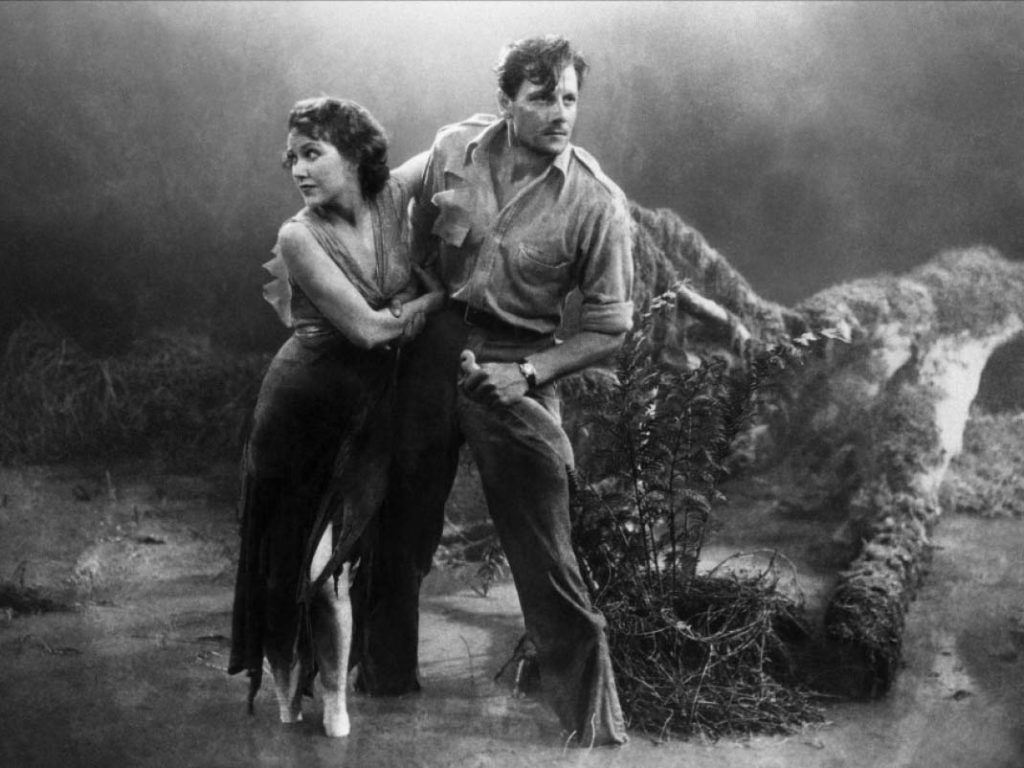
Most people won’t have seen this RKO movie, shot during pre-production of King Kong and using that film’s sets and leading lady Fay Wray. But, everyone will have seen a film or TV show inspired by it. For The Most Dangerous Game is the template movie in which one set of characters are hunted for sport by another. And it is most definitely a blood sport.
Based on a 1924 Richard Connell short story and running barely more than an hour, the film doesn’t get to the famous chase until the final 25 minutes. But, it zips along at a speedy pace throughout and boasts a full-flavoured ham performance from Leslie Banks as Count Zaroff.
A proper boo-hiss baddy, Zaroff speaks in deliciously ominous dialogue: “What I needed was not a new weapon, but a new animal… here on this island, I hunt the most dangerous game.” Or the more on the nose, “Hunt first the enemy, then the woman.”
One thing largely absent from The Most Dangerous Game is what would subsequently become the reason why its plot has proved so durable: allegory. Screenwriters discovered you could make all sorts of points when depicting man (and it is typically man, although The Hunt does a cool gender flip) hunting man.
The Hunt’s subtext is how modern American discourse has become so poisoned, people only see others through a lens of toxic social media. So, the film’s characters find it easy to lock n’ load and embrace “cancel culture” in the most lethal ways.
Making this latest Blumhouse outing sledgehammer satire to be sure, getting comic mileage out of broad swipes at the 2nd Amendment, woke culture, social media, conspiracy theories, crisis actors, climate change and junk food.
But, it is smarter than the 2-star reviews would have you believe, packing in genuine surprises and shrewd comments about how knowing all the facts before rushing to judgement typically means avoiding a messy ending. Whichever side of the political spectrum you plant your flag…
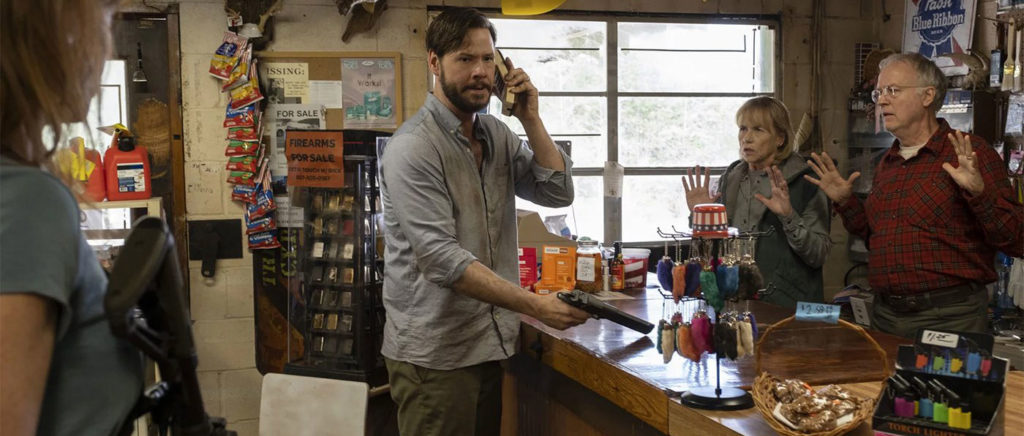
In this way, The Hunt continues a long tradition of using The Most Dangerous Game’s template to tap into primal fears and pile on the social commentary. In a rural setting (most of these films are wilderness survival movies and routinely cross into horror territory).
RKO’s official remake, 1945’s A Game of Death directed by Robert Wise, made the villain a Nazi-in-hiding. So too did Roy Boulting’s 1956 movie Run for the Sun, with Richard Widmark as the hero and Trevor Howard the bad guy.
Ignoring local customs proves deadly in 1965’s The Naked Prey. Cornell Wilde plays a nameless safari leader in the African Savannah, who finds himself given “the lion’s chance” after one of his team refuses to pay tribute to a local tribe. The film isn’t as deliriously “problematic” as you might fear and would make a good double bill with Mel Gibson’s undeniably impactful Apocalypto (2006).
With the upper classes having a, ahem, rich history of hunting, it is no surprise many films use this plot to skewer champagne-and-caviar-guzzling scumbags.
1993’s Hard Target, 1994’s Surviving the Game, and 2008’s New Town Killers employ the man-as-prey device for blunt-force commentary on the exploitation of society’s underclass. Far cry from Joel McCrea’s dashing hero in The Most Dangerous Game, who is a big game hunter escorting the elite on safari, and to modern eyes something of a wrong ‘un himself.
2019’s Ready or Not proves there is still value in showing just how vile (and comically incompetent) the upper classes can be when trying to demonstrate their superiority. Plus, of course, Blumhouse’s class-conscious The Purge franchise (2013 – ) became very The Most Dangerous Game when the sequels let characters go outside.
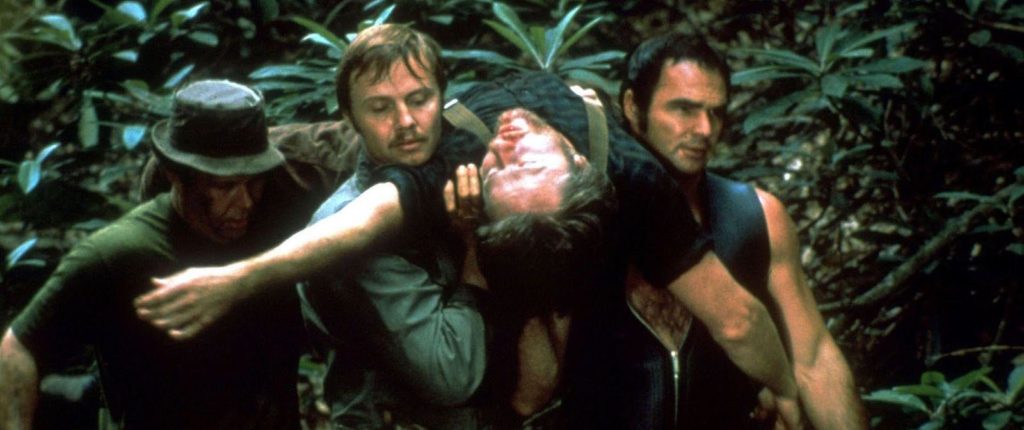
Then there is the “countryside bites back” horror sub-genre big in the 1970s, with disgruntled yokels exacting revenge on the city folk who are making their way of life obsolete. Examples include Deliverance (1972), The Texas Chain Saw Massacre (1974), Rituals (1977), and The Hills Have Eyes (1977). Occasionally the theme is resurrected as in 1986’s Deliverance rip-off Hunter’s Blood.
1981’s Southern Comfort used the plot device as a critique on America’s involvement in Vietnam, with Louisiana swamp folk standing in for the Vietcong. Although director Walter Hill swears blind he wasn’t thinking of allegory when making the film. Hmmmm…
The story conceit was employed a year later as a comment on Vietnam veterans’ difficulty in returning to normal life in Stallone’s First Blood, flipping the premise so the hunted swiftly becomes hunter.
The plot has also proved useful in satirising the increasingly vicious demands of reality TV: see here Series 7: The Contenders (2001), My Little Eye (2002), and Gamer (2009).
Any plot device where humans are seen as fleeing animals is ripe for a bit of social commentary on the modern world’s dehumanising effects on the young. For further details check out, *SPOILERS*, Them (2006), King of the Hill (2007) and Eden Lake (2008).
The pressures of school or fears of entering the adult world are also articulated in Battle Royale (2000) and The Hunger Games (2012).
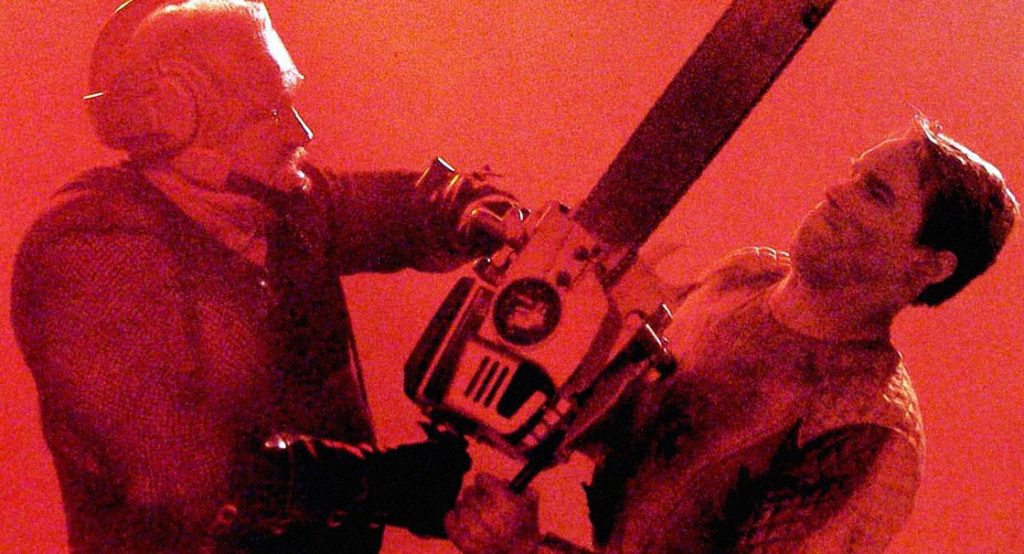
The storyline delivered a Schwarzenegger sci-fi classic and a Schwarzenegger sci-fi stinker in the same year. Yes, we’re looking at you 1987’s Predator and The Running Man, the latter being another example of reality TV gone mad.
WWE star Steve Austin also tried to make the jump from muscleman to movie star through playing The Most Dangerous Game in 2007’s The Condemned. He returned for a rematch in 2010’s Hunt to Kill. But, Tinseltown said “thanks, but no thanks” and Steve is now back doing WWE shows.
The flexibility of this plot means it can produce a bargain basement video nasty (Turkey Shoot, 1982), a slasher masterpiece (The Hitcher, 1986), a kind-of advert for the Scottish tourist board (A Lonely Place to Die, 2011) and a yawn inducing gore-fest (Carnage Park, 2016).
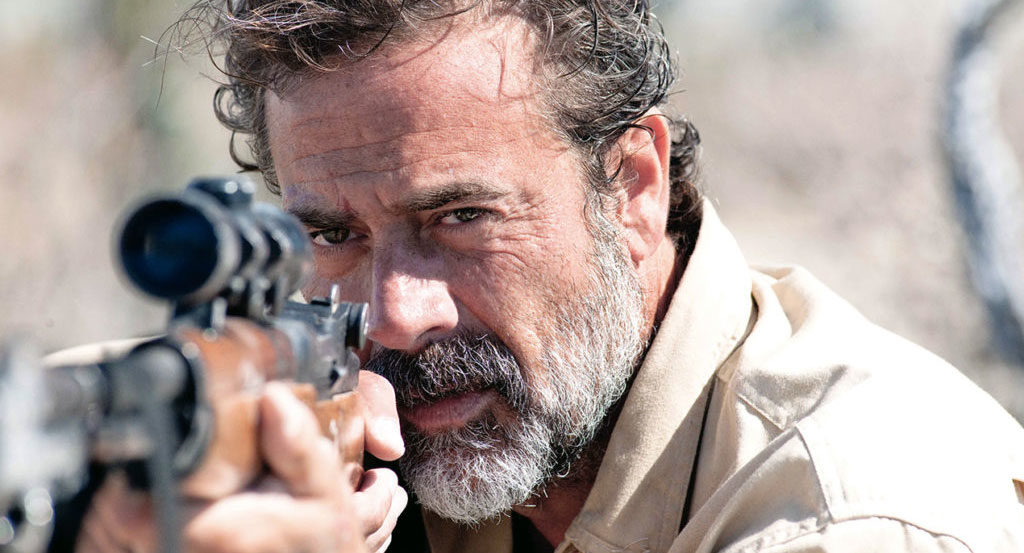
Hell, it even works when you put it behind the wheel: see Spielberg’s Duel (1971) and George Miller’s Mad Max: Fury Road (2015) for two fully-revved examples. Unexpectedly, Fury Road was a critique of toxic masculinity and a celebration of female empowerment wrapped up in a chase movie. Predictably, basement-dwelling, hairy-palmed fanboys got in a right tizzy about it. They’d probably just be bored by Duel…
Perhaps because the plight of immigrants and refugees is so heartbreaking, there aren’t too many films that use them in A Most Dangerous Game scenario. One excellent, well-judged exception is 2015’s Desierto. Here, Gael Garcia Bernal’s character tries to get himself and others across the border into the US, while Jeffrey Dean Morgan’s sniper rifle-toting psycho does his best to Make America Great Again… a year before Trump would be elected.
On the small screen we’ve seen episodes of The Incredible Hulk, The Simpsons, Criminal Minds, Relic Hunter, Get Smart, American Dad and Gilligan’s Island all use the person-as-prey plot. More recently, in the UK we’ve had reality shows Hunted (2015 -) from Channel 4 and Sky One’s The Heist (2018).
This year Liam Hemsworth and double-Oscar winner Christoph Waltz star in Most Dangerous Game, launching in April on the short-form video platform Quibi. This series looks to be going down The Running Man route: high stakes, big cash prizes…
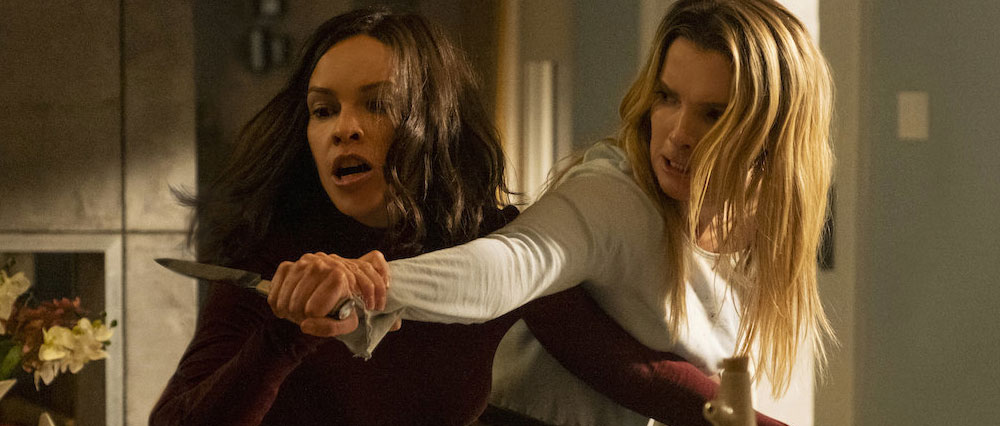
So, should you rent The Hunt? Yes. It is smart, features real shocks (one of which matches that gasp moment in Blumhouse’s The Invisible Man), and is loaded with decent action (particularly the laugh-and-wince climactic smackdown).
It also sports a great lead performance from Betty Gilpin that should have Marvel knocking on her door.
This is just a mere overview of The Most Dangerous Game’s influence on cinema. There are many other examples, and if we’ve missed any obvious and/or important films, please shout out in the comments section.
Ultimately, The Hunt proves that for this story, it’ll never be game over…
Rob Daniel
Twitter: rob_a_Daniel
iTunes Podcast: The Electric Shadows Podcast

Pingback: FrightFest 2022 Round-Up
Pingback: The Electric Shadows' Top 10 Movies of the Year is a feast of film
Pingback: Bloodshot, Military Wives, Emma & The Hunt - podcast review
Pingback: From Our Members’ Desks (Mar. 23, 2020) | Online Film Critics Society